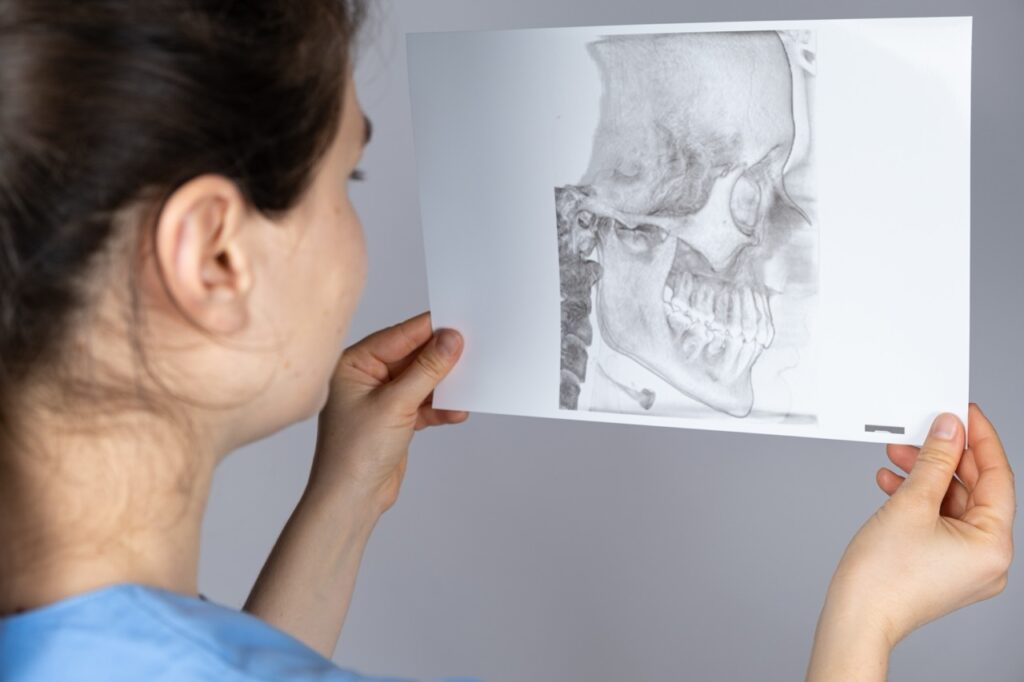Resource Library
Start Reading

What causes headaches? Plenty of things can: stress, bright lights and loud sounds, fatigue, and even some foods we eat. But orofacial pain—discomfort in the face, jaw, mouth, or related structures—is one cause of headaches patients often overlook.
Because they can affect quality of life so profoundly, orofacial pain and headaches have become significant areas of concern to medical researchers.
Understanding the link between orofacial pain and headaches is critical for accurately diagnosing the source of your pain, and in giving you effective treatment that brings relief.
 While almost everyone experiences occasional headaches, chronic and disabling headache disorders affect about 40% of the world’s population.
While almost everyone experiences occasional headaches, chronic and disabling headache disorders affect about 40% of the world’s population.
Health professionals classify headaches as primary headaches or secondary headaches. Primary headaches, such as migraine headaches and tension-type headaches, aren’t caused by some other medical condition. Secondary headaches result from an underlying issue.
Orofacial pain and headaches are closely related. They influence and exacerbate each other. Their relationship is largely due to shared anatomical structures and neural pathways.
The temporomandibular joint (TMJ) connects the skull and lower jaw. Disorders of the TMJ can cause headaches because they can induce muscle tension, leading to referred pain (pain experienced in a place other than its source) in the neck, in the temples, or behind the eyes.
A “TMJ headache,” then, may be one of several common temporomandibular disorders (TMD) resulting from malocclusion (“bad bites”), excessive teeth grinding (bruxism), stress, arthritis, or physical trauma.
The trigeminal nerve is one of the largest cranial nerves and plays a crucial role in transmitting pain sensations from the face to the brain.
Dysfunction or irritation of this nerve can lead to a variety of headache disorders, including cluster headaches and migraines.
Can bad oral hygiene cause headaches? It can contribute to them, primarily through the development of such dental issues as cavities, gum disease, or tooth infections.
When oral health deteriorates, it can lead to inflammation and pain that may radiate beyond the mouth and jaw, potentially triggering tension-type headaches or making existing headache conditions worse.
 Recognition of the overlap between orofacial pain and headaches continues to grow. Oral health professionals, such as those here at Penn Dental Family Practice (PDFP), conduct comprehensive assessments and tailor treatment plans to each patient’s unique needs.
Recognition of the overlap between orofacial pain and headaches continues to grow. Oral health professionals, such as those here at Penn Dental Family Practice (PDFP), conduct comprehensive assessments and tailor treatment plans to each patient’s unique needs.
For instance, to treat TMJ/TMD disorders and headaches, our dentists can draw on a variety of effective strategies to alleviate pain and restore function.
Depending on your specific diagnosis, treatment options could include:
Similarly, treatment strategies for trigeminal nerve disorders can also involve medications (such as anticonvulsant medications to stabilize nerve activity and reduce pain signals) or surgery (such as repositioning or removing blood vessels near the trigeminal nerve, or selectively cutting the nerve to interrupt pain transmission).
In addition, as necessary, our dentists collaborate and coordinate care with the care that primary care physicians, physical therapists, and mental health professionals provide, since treating complex headache disorders could also involve pharmacological treatments and psychological and physical therapy.
 If headaches are causing you chronic discomfort and taking a heavy toll on your quality of life, don’t overlook the possibility that oral health issues are causing or contributing to them.
If headaches are causing you chronic discomfort and taking a heavy toll on your quality of life, don’t overlook the possibility that oral health issues are causing or contributing to them.
You don’t have to keep suffering. The orofacial pain experts at PDFP can diagnose your condition, address its underlying cause, restore your normal oral functions, and bring you relief.
Make your appointment with PDFP online now or call us at 215-898-PDFP (7337).